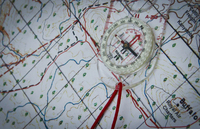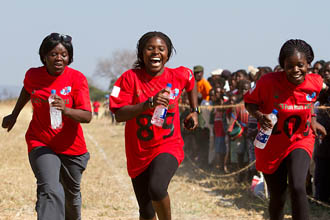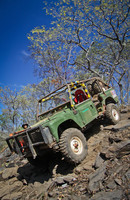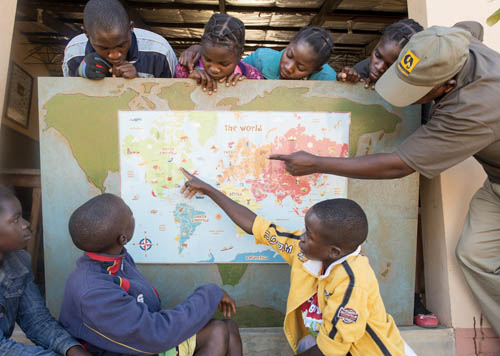

The Elephant Charge is an annual event which challenges teams of cars and motorbikes to complete a gruelling course through the Zambian bush. The Charge is held to raise money for conservation in Zambia, focussed on conservation through education, and in the ten years since in began, the event has raised over $1,788,000 which has been distributed to conservation organisations working across the country. The event is held at a different location each year over the the course of a weekend in September or October.
Find out how to get involved with the Elephant Charge 2024 on 23 September 2024
On the day of the Charge, the winning team is the one that completes a course of ten checkpoints in the shortest distance possible within the allowed 8 hours. Given a map and with skill and determination, each team must find their own route between the checkpoints through valleys, over ridges, across rivers and up escarpments in a trial of driving, navigating and endurance.

The teams that enter the Elephant Charge make a pledge to the conservation charities and every single dollar that the teams raise is passed directly to the Zambian beneficiary charities as grants. The money needed to put on the Elephant Charge competition itself is raised by the organising committee and comes from charge sponsors and a small entry fee paid by each team.
The beneficiaries make grant applications each year and are selected based on the programs and projects thats they propose which are best placed to deliver on the Elephant Charge mission of conservation through eduction in Zambia. The beneficiaries prepare reports on how the funds have been spent through the year so that the Elephant Charge and the teams can be sure on how the money raised is spent.



Elephant Charge accepts entries in one of two classess: car or motorbike. Car teams consist of a vehicle with between two and six passengers, while motorbike teams comprise of three to four bikes and riders.
Each team must designate a navigator who is issued with maps and checkpoint cards before the race. Each team hopes that their navigator knows which way up to hold the map, their left from their right, and how to switch on the GPS.
Car teams designate a driver who is responsible for all the driving during the charge - and all of the blame afterwards. The rest of the team are runners. The runners scout through the bush for the shortest route that can be taken but which gets the team to the finish in one piece.
The exact location of the Elephant Charge is a carefully guarded secret until the day before the competition when directions to the charge site are released. The Teams meet at the site for sign-in and vehicle scrutineering on the day before the race andare given directions to get to their camp sites.
Maps are issued to the teams on the evening before the race. The maps show the location and GPS coordinates of each of the ten checkpoints. Each team is also given - by random draw - a starting checkpoint.
Teams study their maps the evening before the race and pick their intended route, aiming for the shortest possible distance across the course while avoiding the chasms, peaks and their own short-comings. During the race, the teams must visit each of the ten checkpoints before returning to their starting checkpoint. Each team can visit the checkpoints in any order and any direction they like.
The Elephant Charge is about covering the terrain in the shortest possible distance and there are no prizes for speed. However, the race does have a time limit and each team must return to their starting checkpoint by 3pm on race day, having completed the course, to be considered for the honours.

There are bush roads cut to each of the checkpoints and these are marked on the competitors maps. These roads never give the shortest distance but teams can use them if they are running short of time or are having trouble convincing their car to carry on.

Three of the checkpoints on the course are designated as the Gauntlet. These checkpoints are close together and include some extreme terrain. The Gauntlet allows the spectators to get close to the action and the teams to show off their abilities.
When the final results are calculated, each team's distance through the Gauntlet checkpoints is multiplied by three. This means it is especially important that teams aim for the shortest distance possible through the Gauntlet as it has a greater impact on their overall result.
There are two Tsetse Lines on the couse which teams can decide to attempt. Each Tsetse Line is between two checkpoints where the shortest distance would be extremely challenging. There is a special prize for the shortest distance achieved on each Tsetse Line.
The Elephant Charge is proud to have been inspired by the Rhino Charge in Kenya.
The Rhino Charge has raised millions of dollars for the Rhino Ark Foundation and the Aberdares National Park since its launch in 1989.
